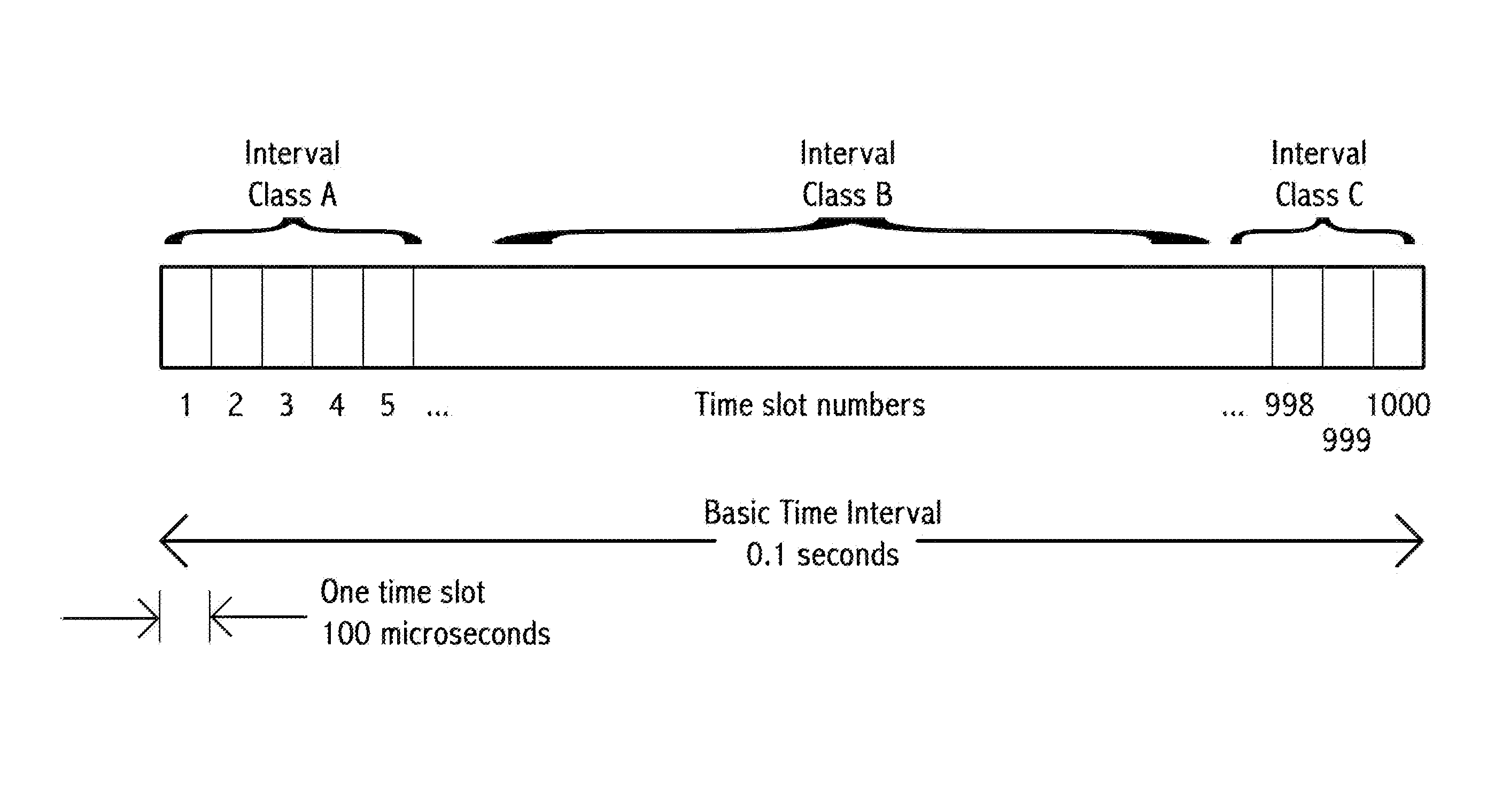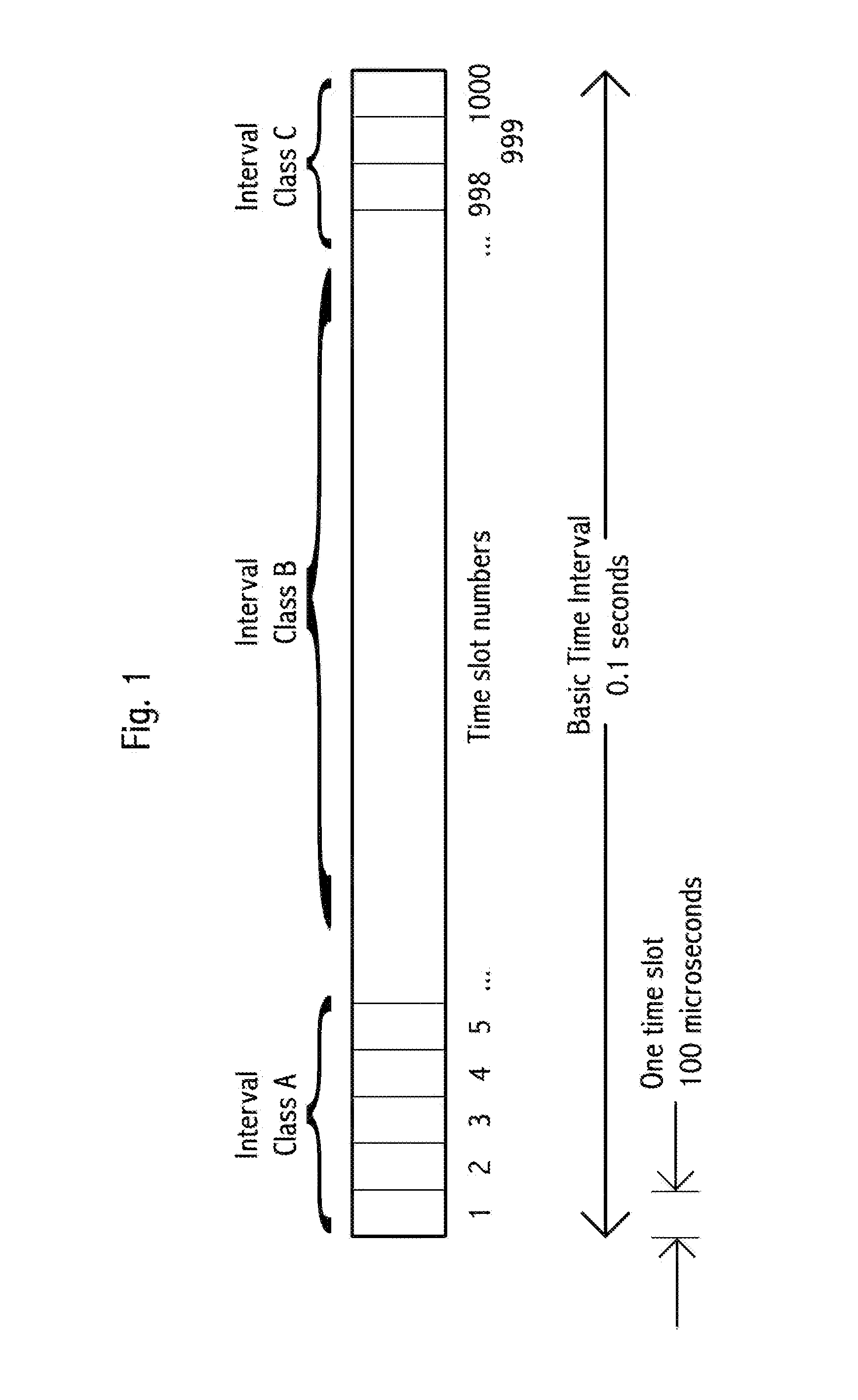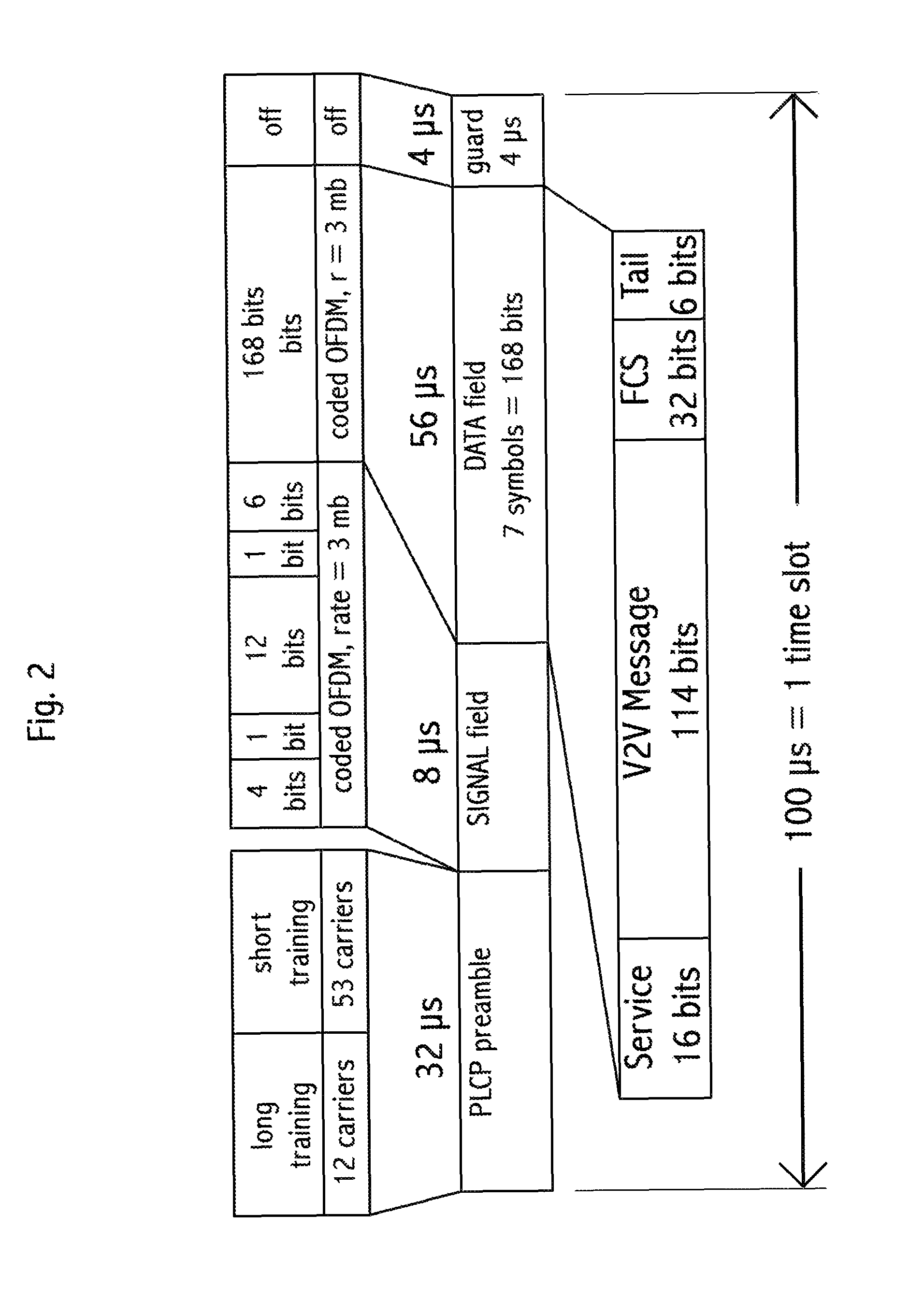Time-slot-based system and method of inter-vehicle communication
a time-slot and vehicle communication technology, applied in the field of time-slot-based system and vehicle communication method, can solve the problems of not being widely used, widespread use not being implemented or planned, and vehicle accident cost in the us is approximately $300 billion per year
- Summary
- Abstract
- Description
- Claims
- Application Information
AI Technical Summary
Benefits of technology
Problems solved by technology
Method used
Image
Examples
Embodiment Construction
[0118]Table of Contents
[0119]Concept and Definitions
[0120]Proxying
[0121]Physical Layer
[0122]Vehicle Identification
[0123]Power Management
[0124]Time Slots
[0125]Message Classes
[0126]Message Formats
[0127]Message Types
[0128]Risk Determination
[0129]Location History
[0130]Time Slot Assignment and Message Collisions
[0131]Position Determination
[0132]Lane Maps
[0133]Vehicle Elevation
[0134]Forwarding
[0135]Hacking and Security
[0136]Recording and Encryption
[0137]Traffic Signal Optimization
[0138]Parking, Courtesy Messages and Gateways
BRIEF DESCRIPTION OF THE DRAWINGS
[0139]FIG. 1 shows a basic time interval of 0.1 s with 1000 numbered time slots, each 100 μs.
[0140]FIG. 2 shows a single 100 μs message frame in IEEE 802.11p format, with a 3 mbit / s modulation, comprising SIGNAL, SERVICE, FCS, and Tail fields, with 114 bits available for a V2V message.
[0141]FIG. 3 shows a single 100 μs message frame in IEEE 802.11p format, with a 6 mbit / s modulation, comprising SIGNAL, SERVICE, FCS, and Tail fields, wit...
PUM
 Login to View More
Login to View More Abstract
Description
Claims
Application Information
 Login to View More
Login to View More - R&D
- Intellectual Property
- Life Sciences
- Materials
- Tech Scout
- Unparalleled Data Quality
- Higher Quality Content
- 60% Fewer Hallucinations
Browse by: Latest US Patents, China's latest patents, Technical Efficacy Thesaurus, Application Domain, Technology Topic, Popular Technical Reports.
© 2025 PatSnap. All rights reserved.Legal|Privacy policy|Modern Slavery Act Transparency Statement|Sitemap|About US| Contact US: help@patsnap.com



